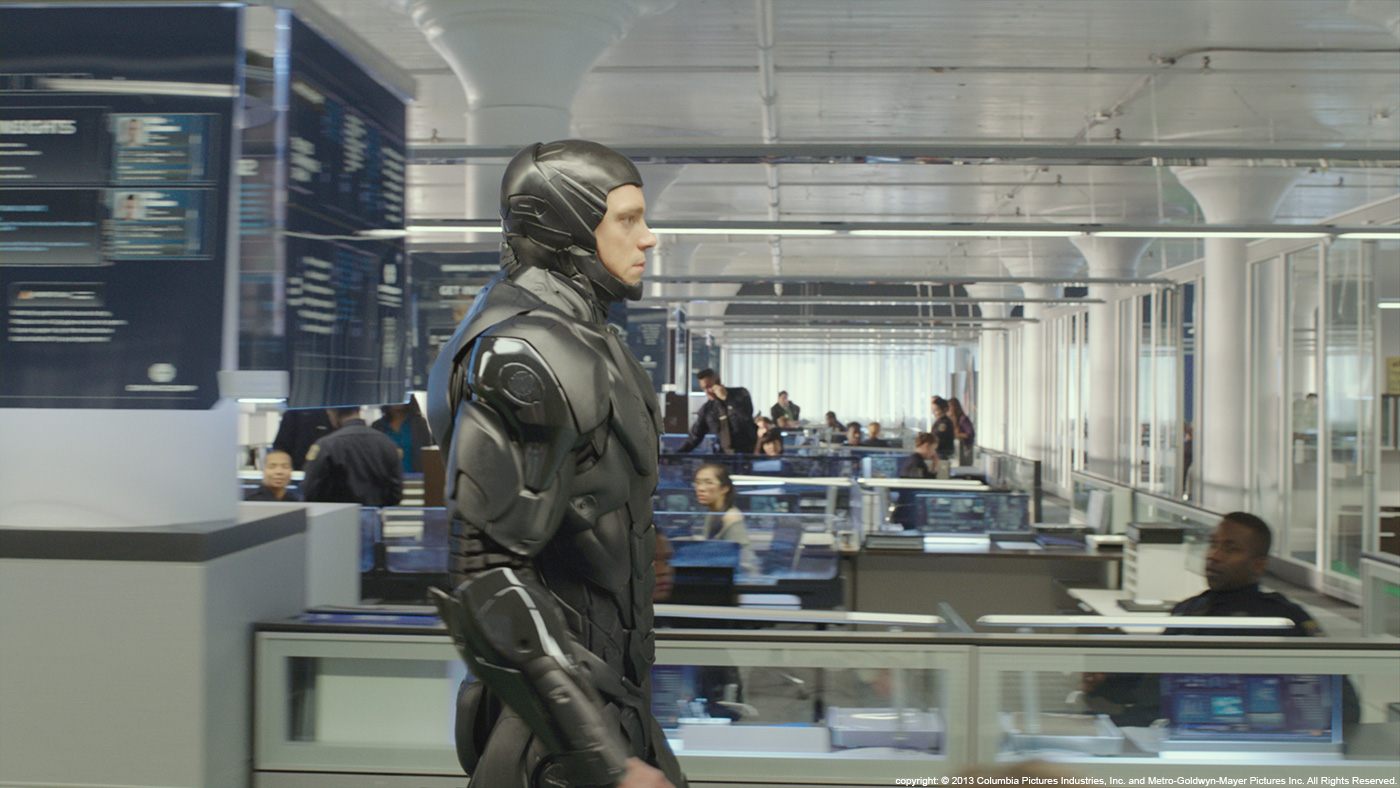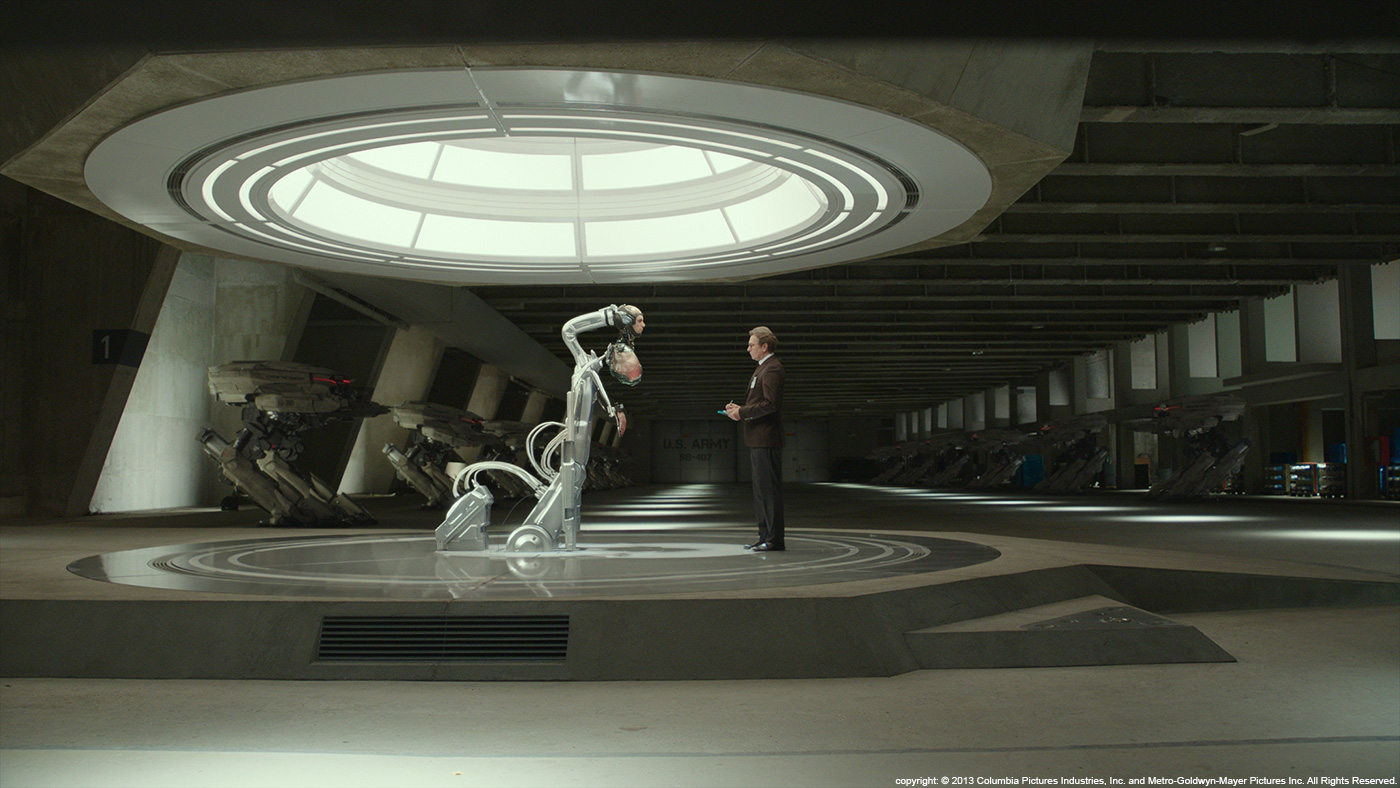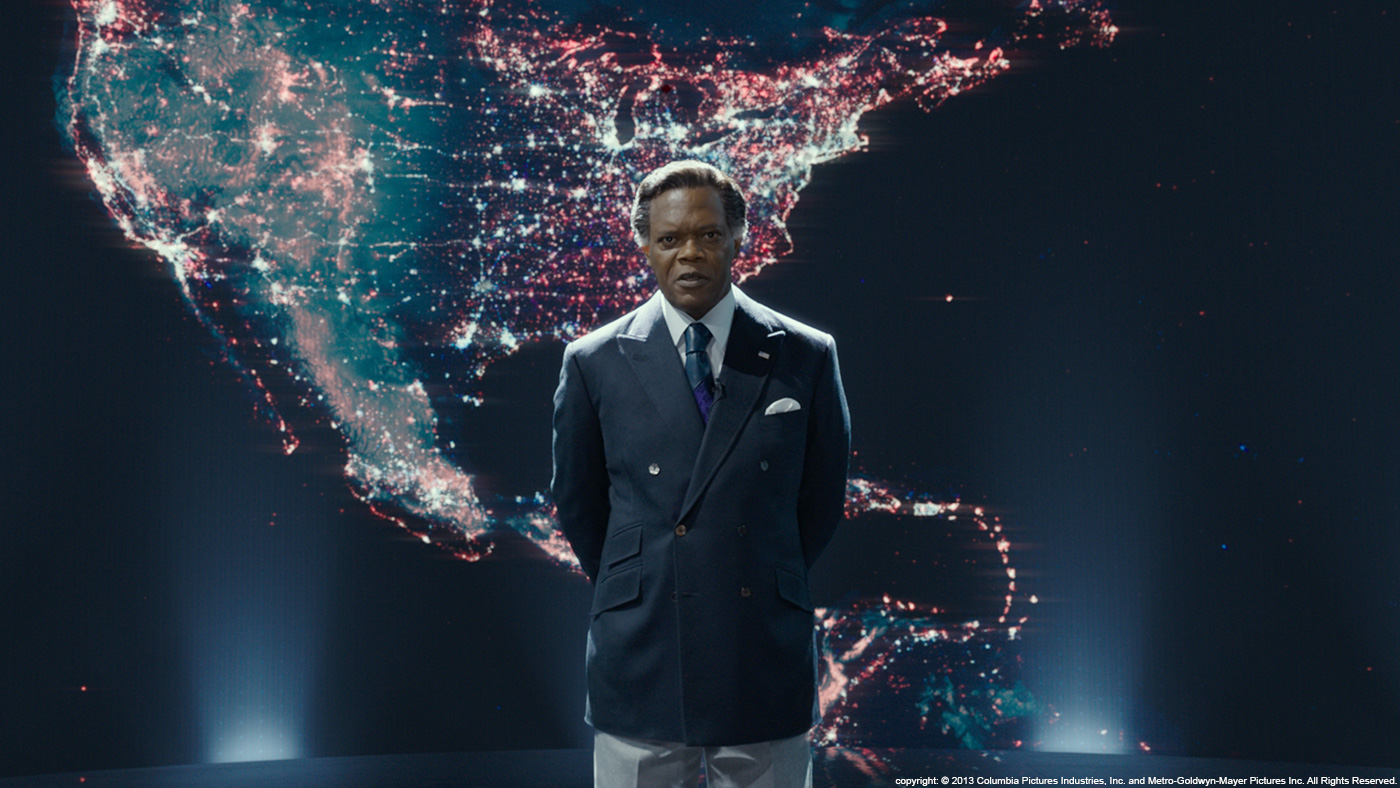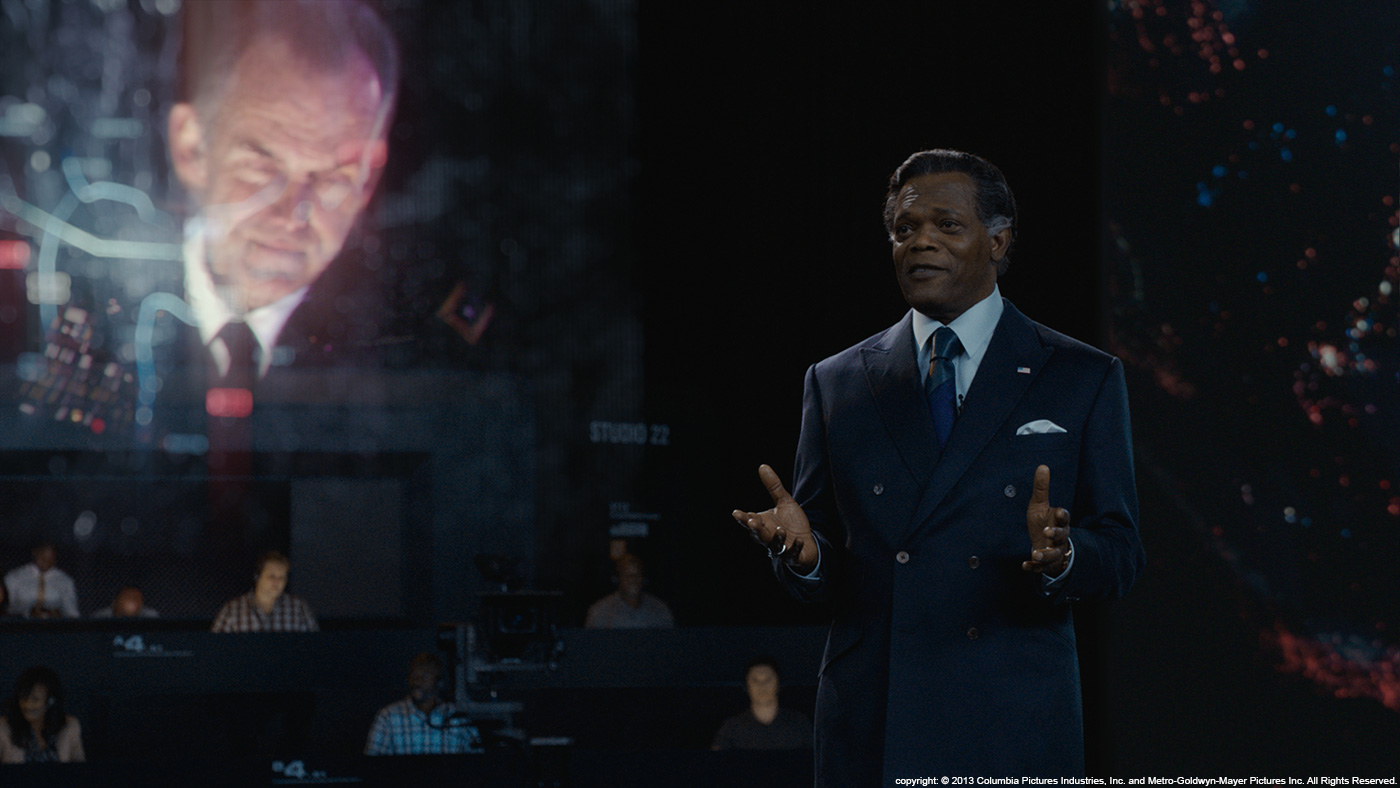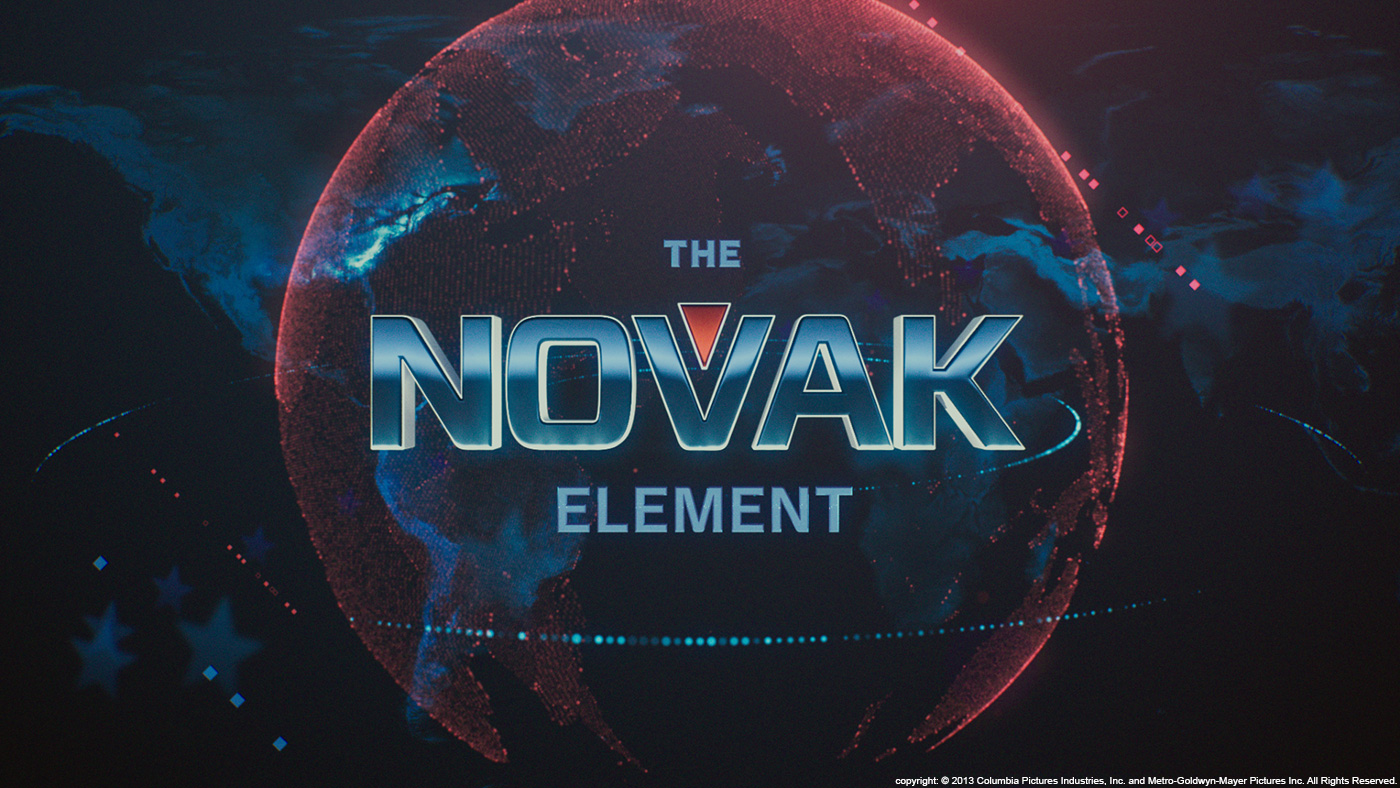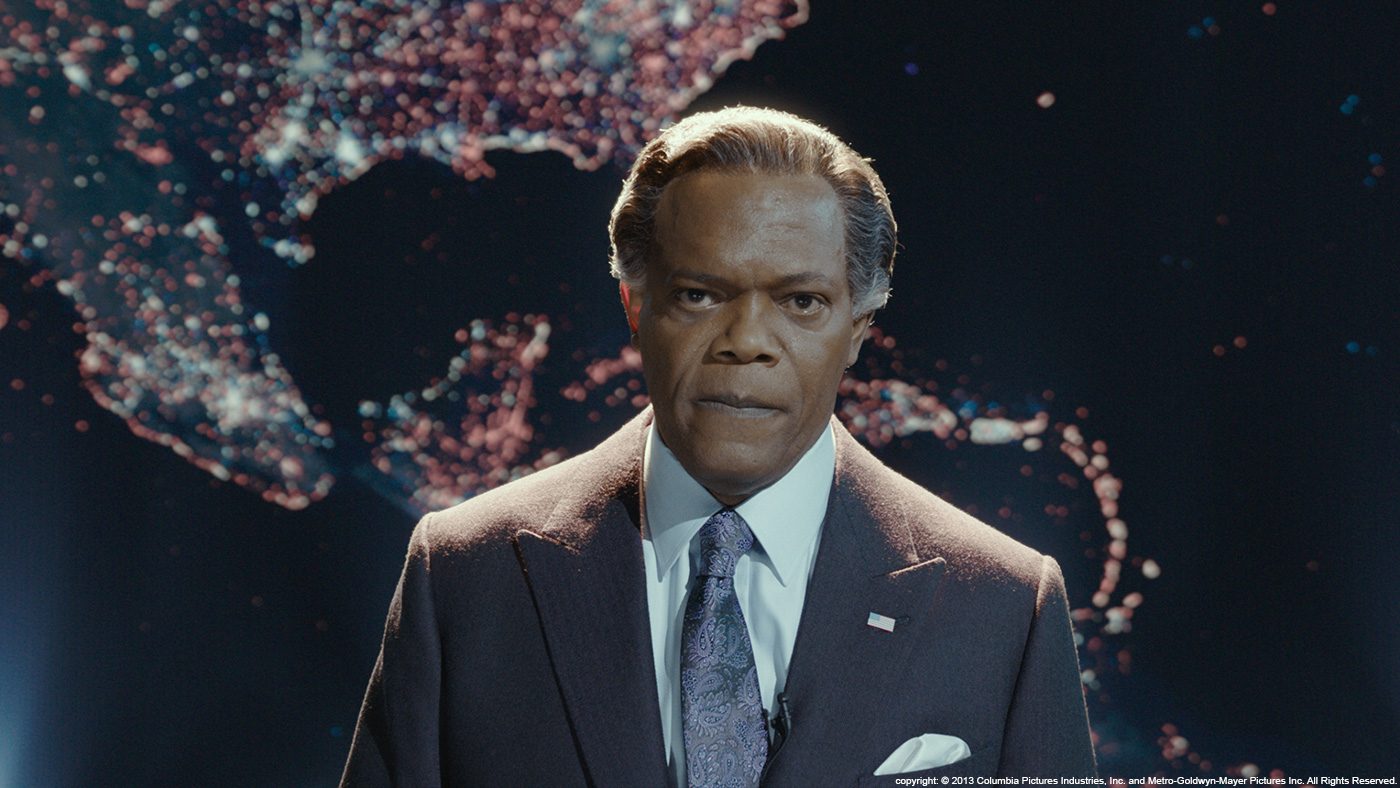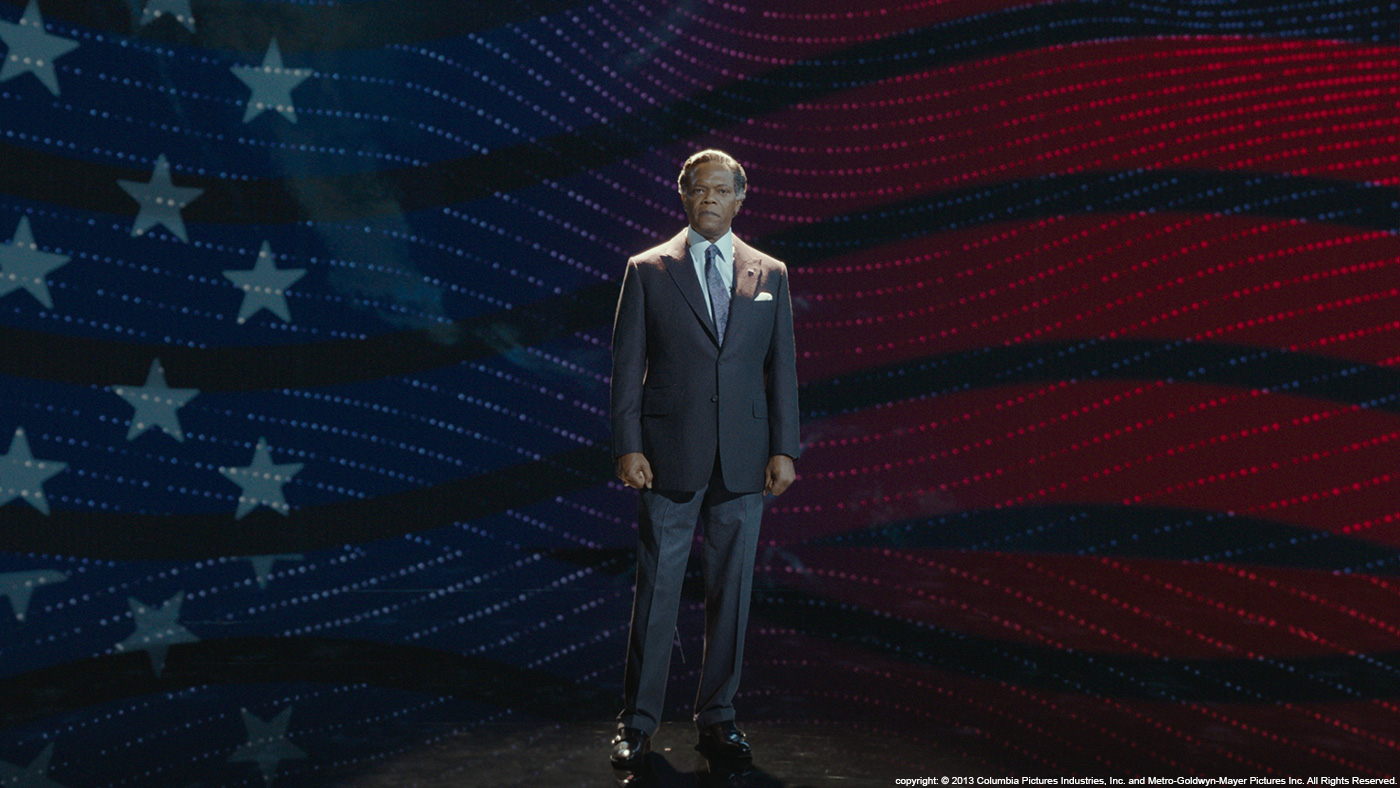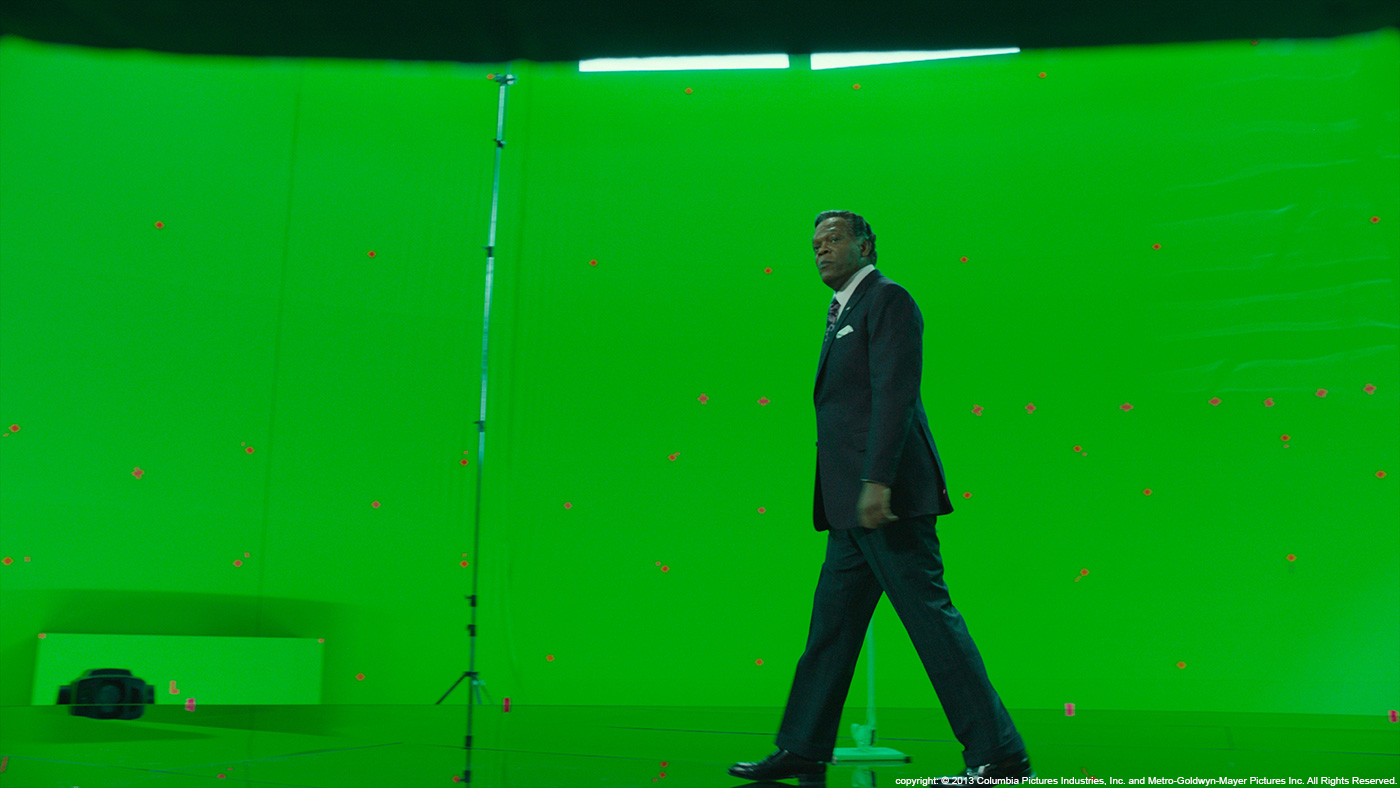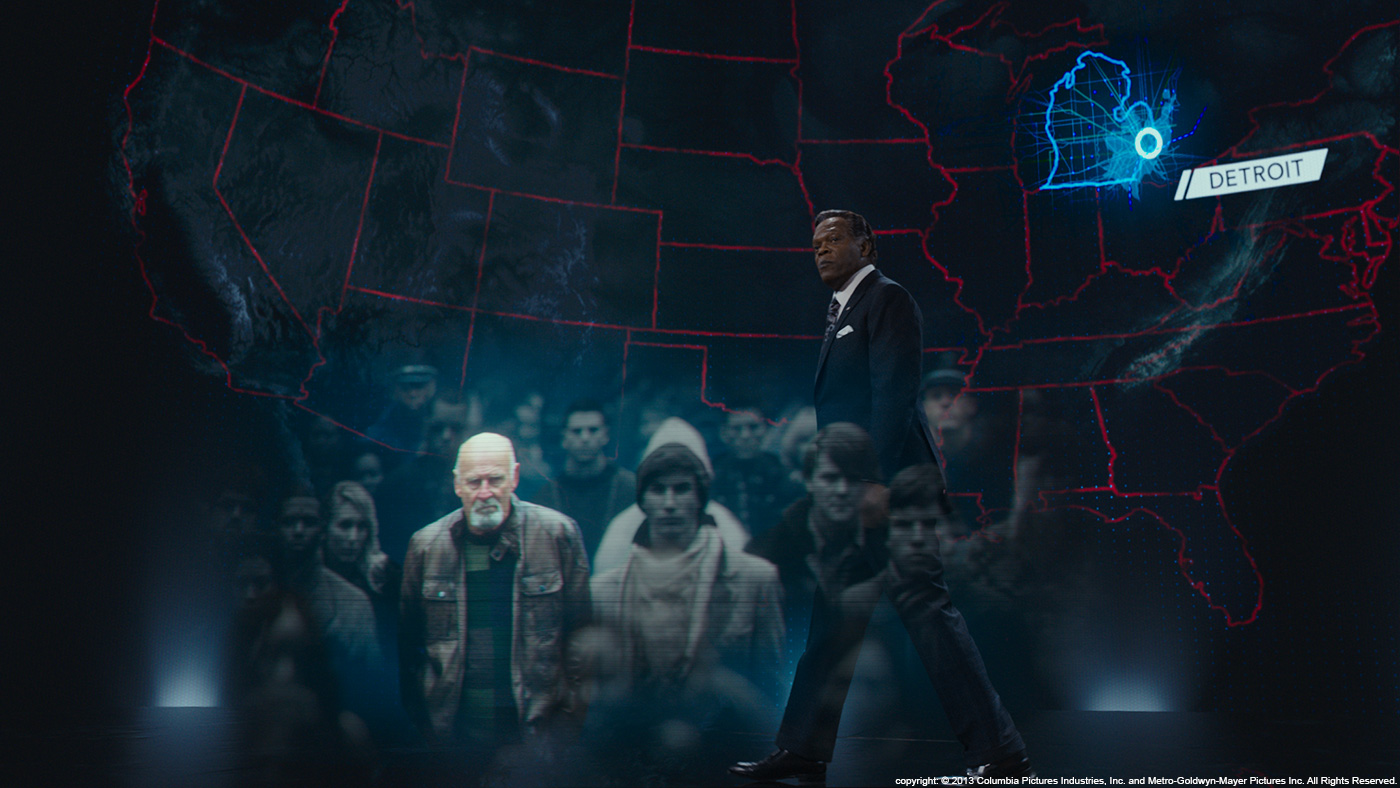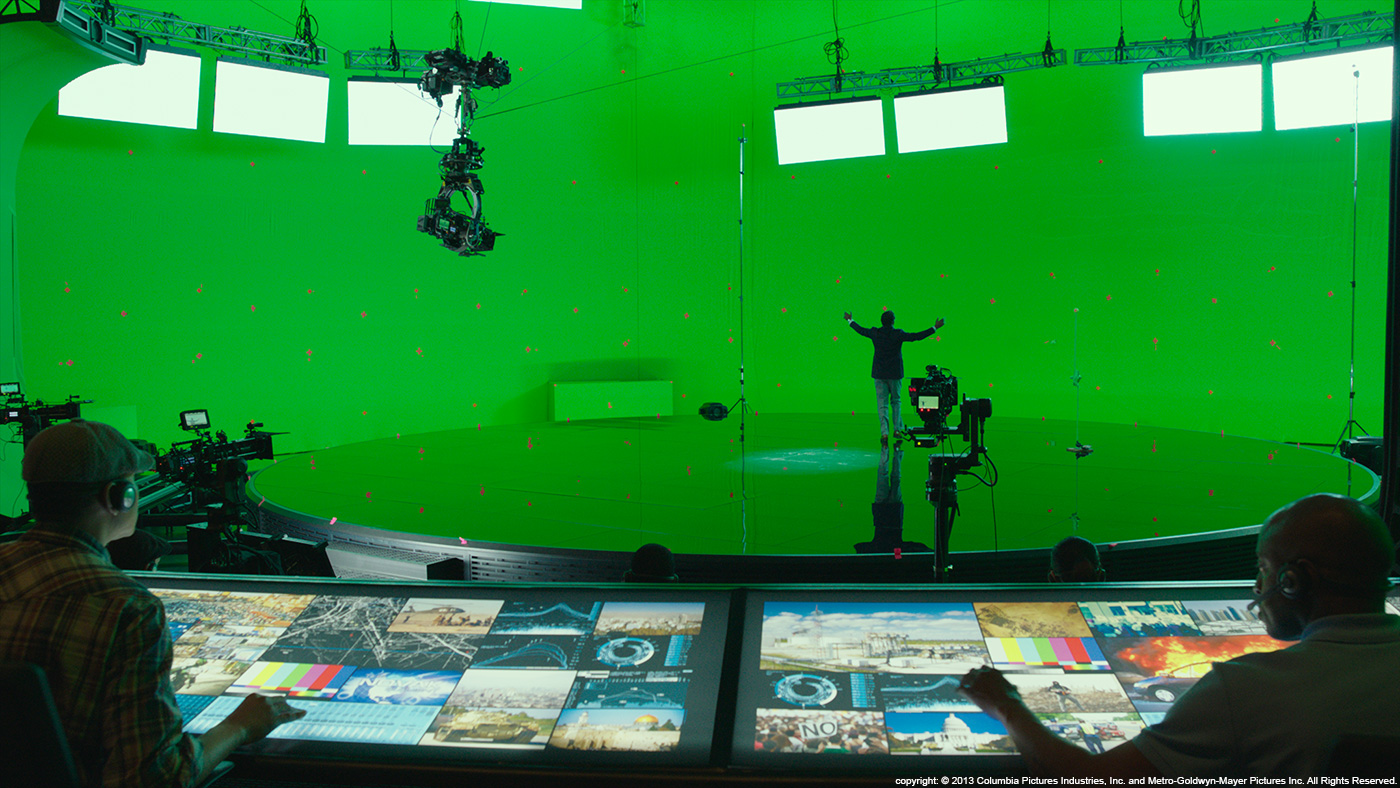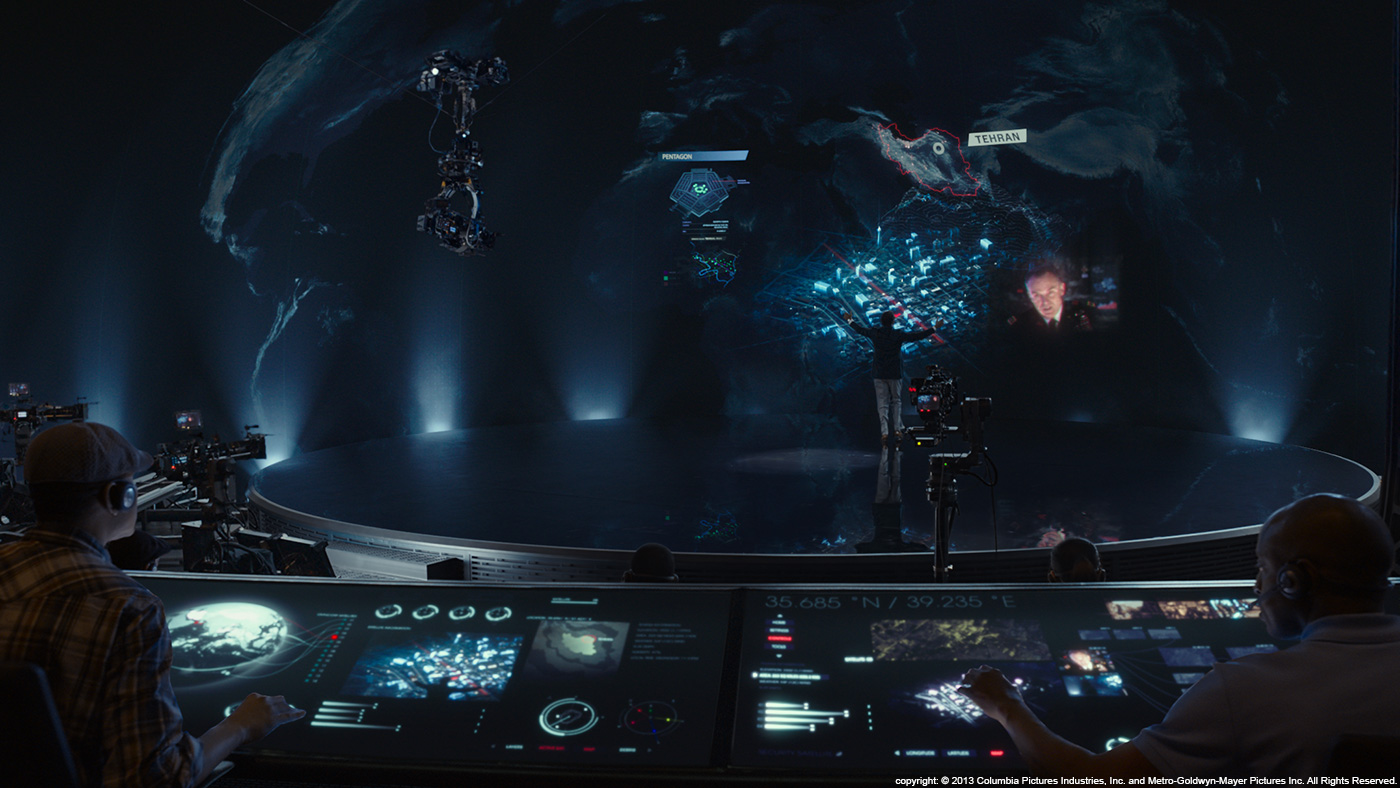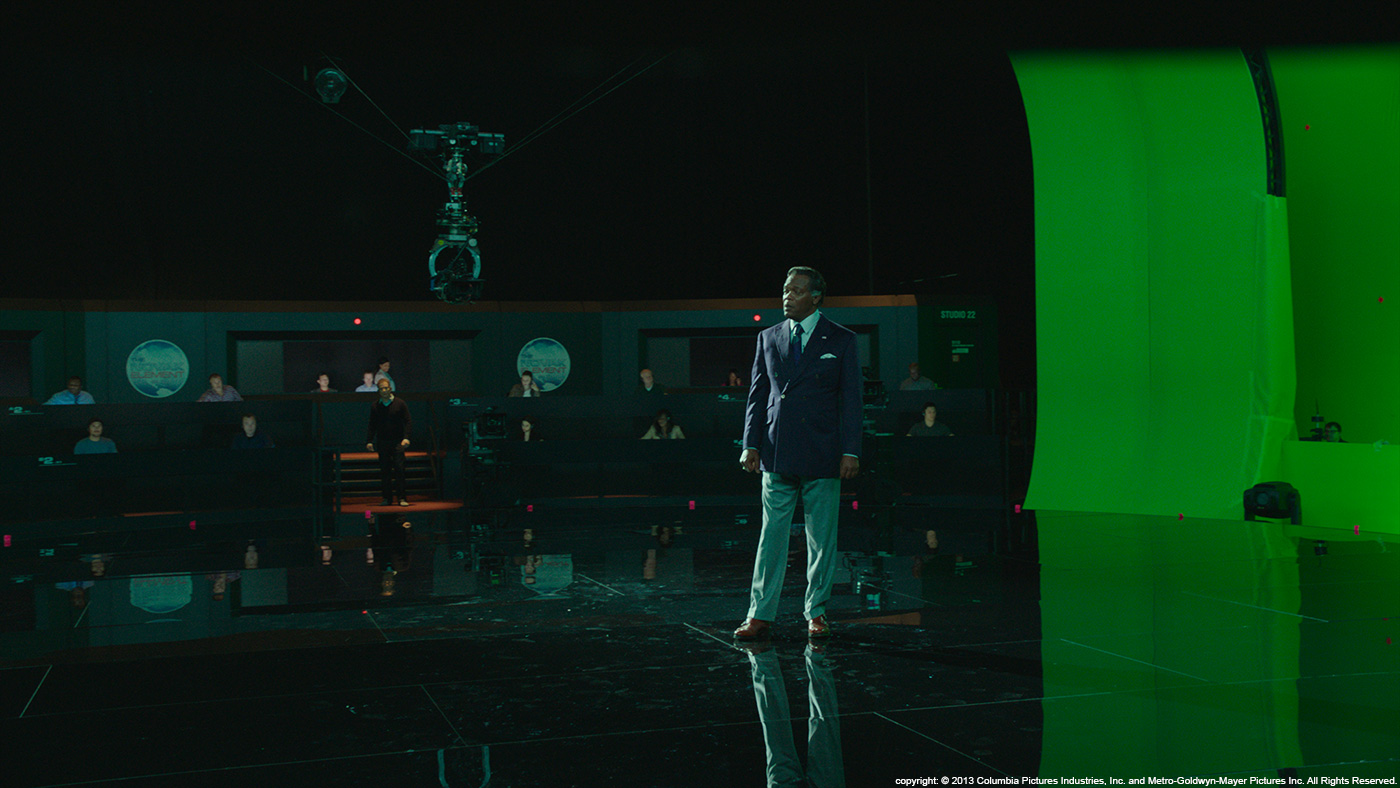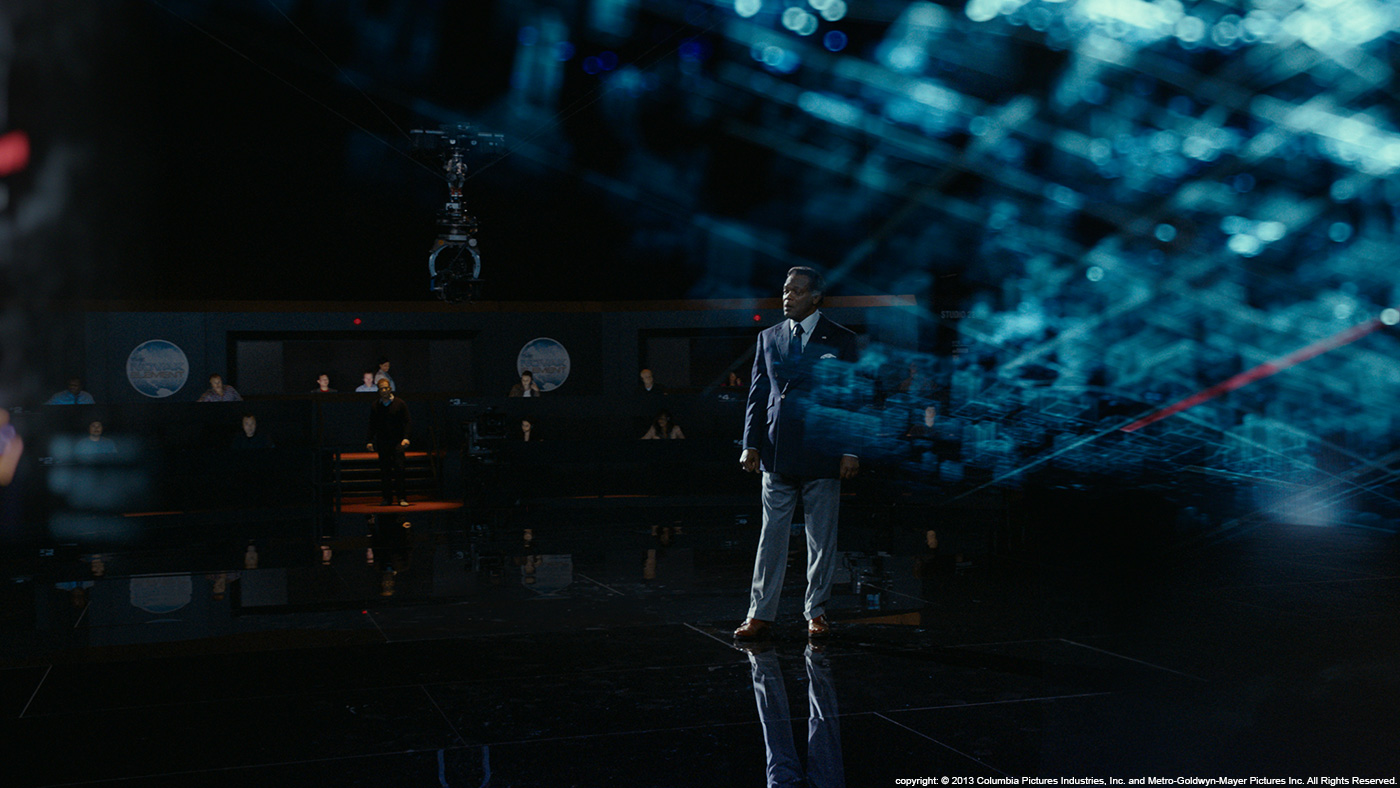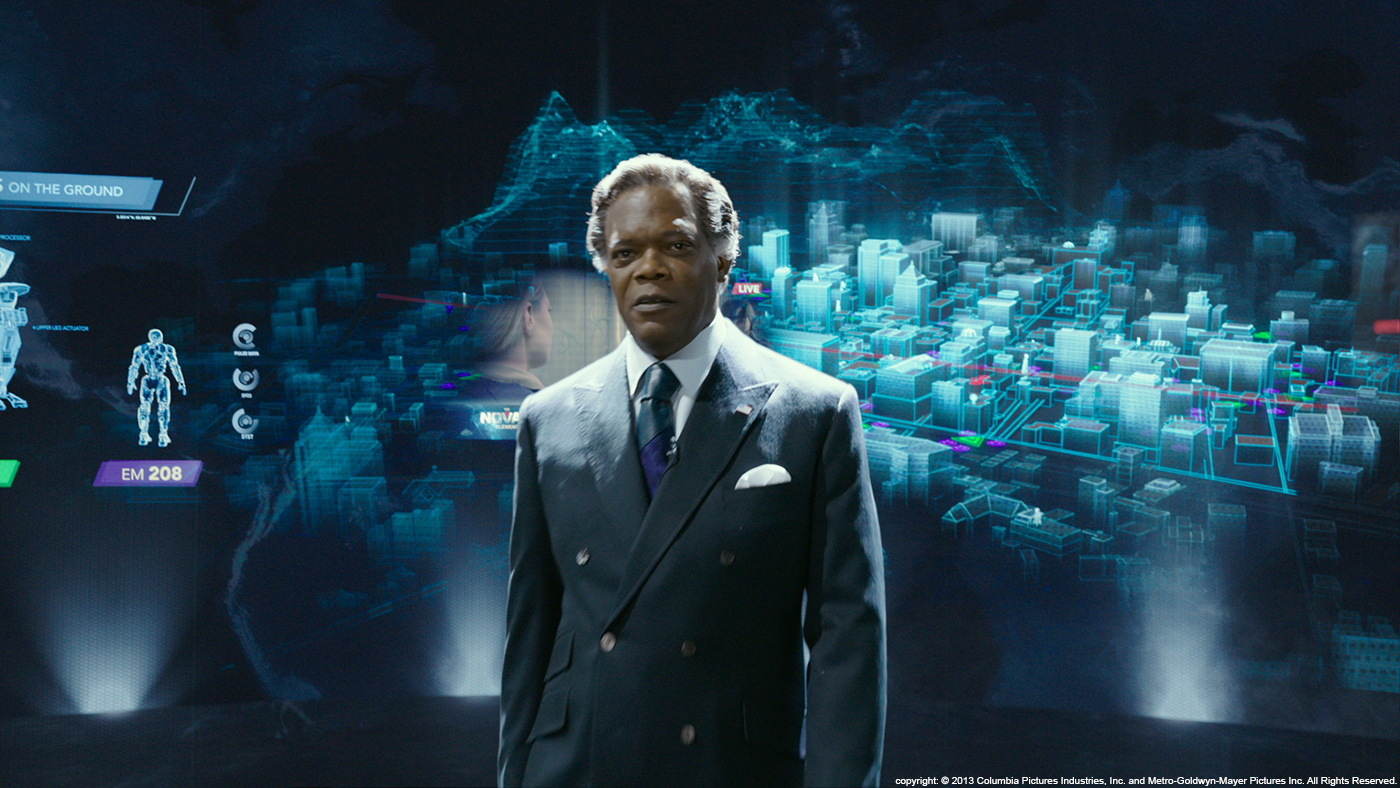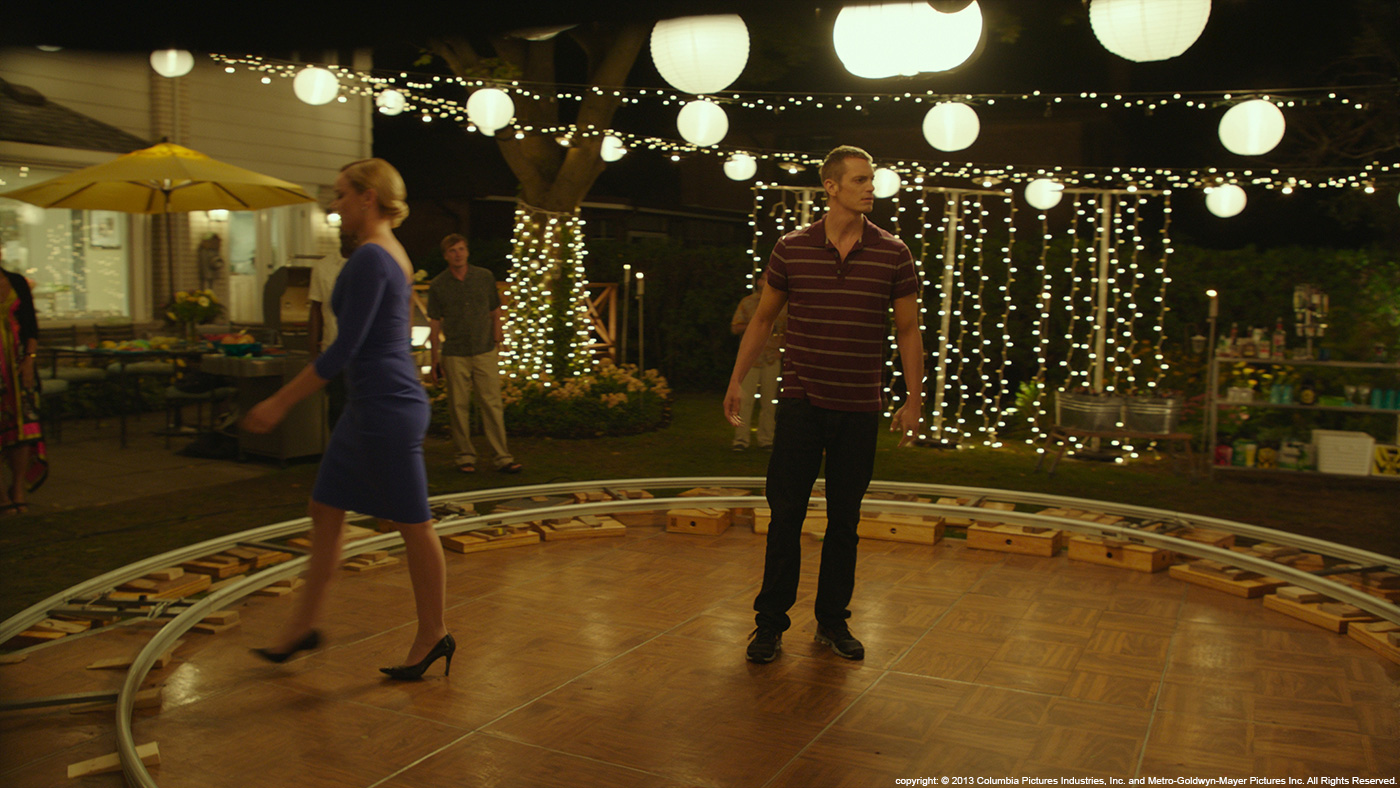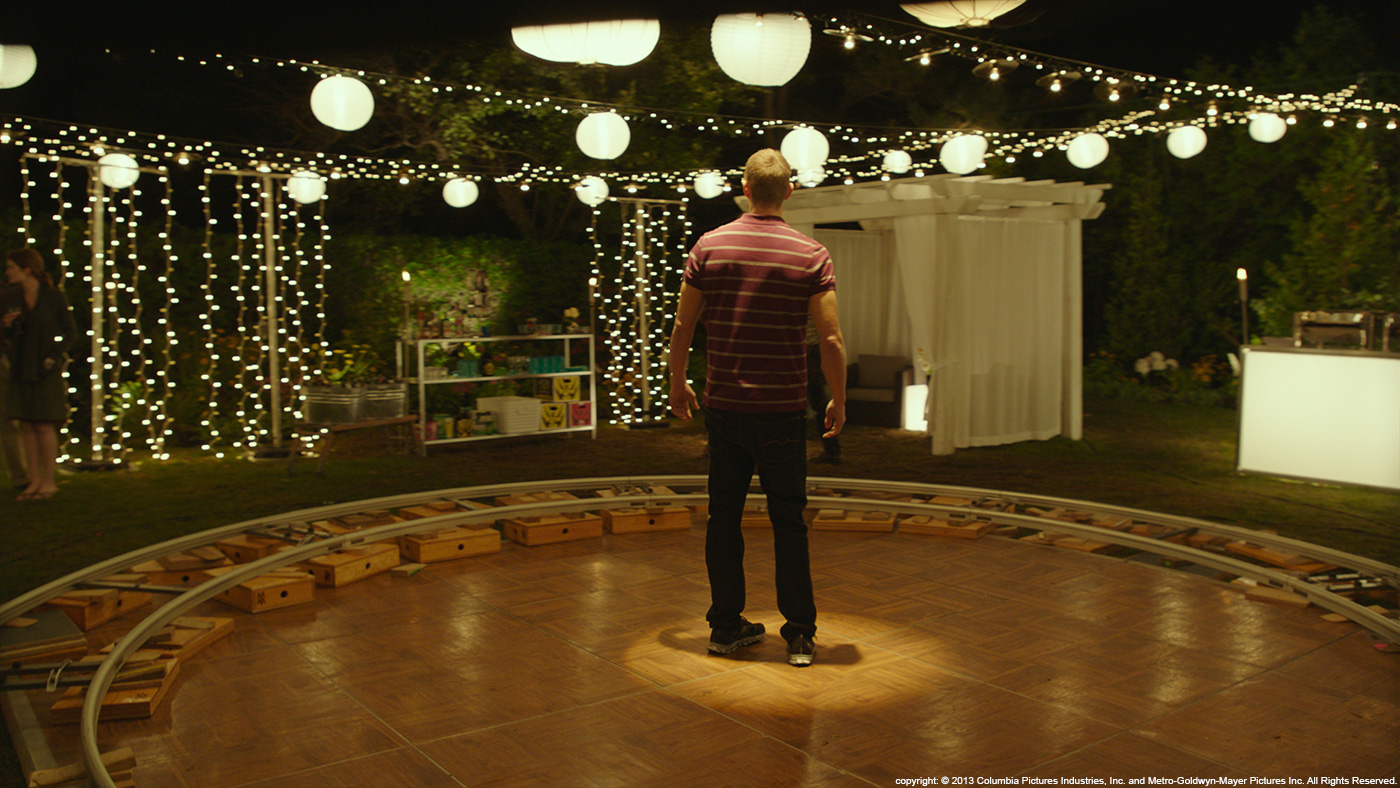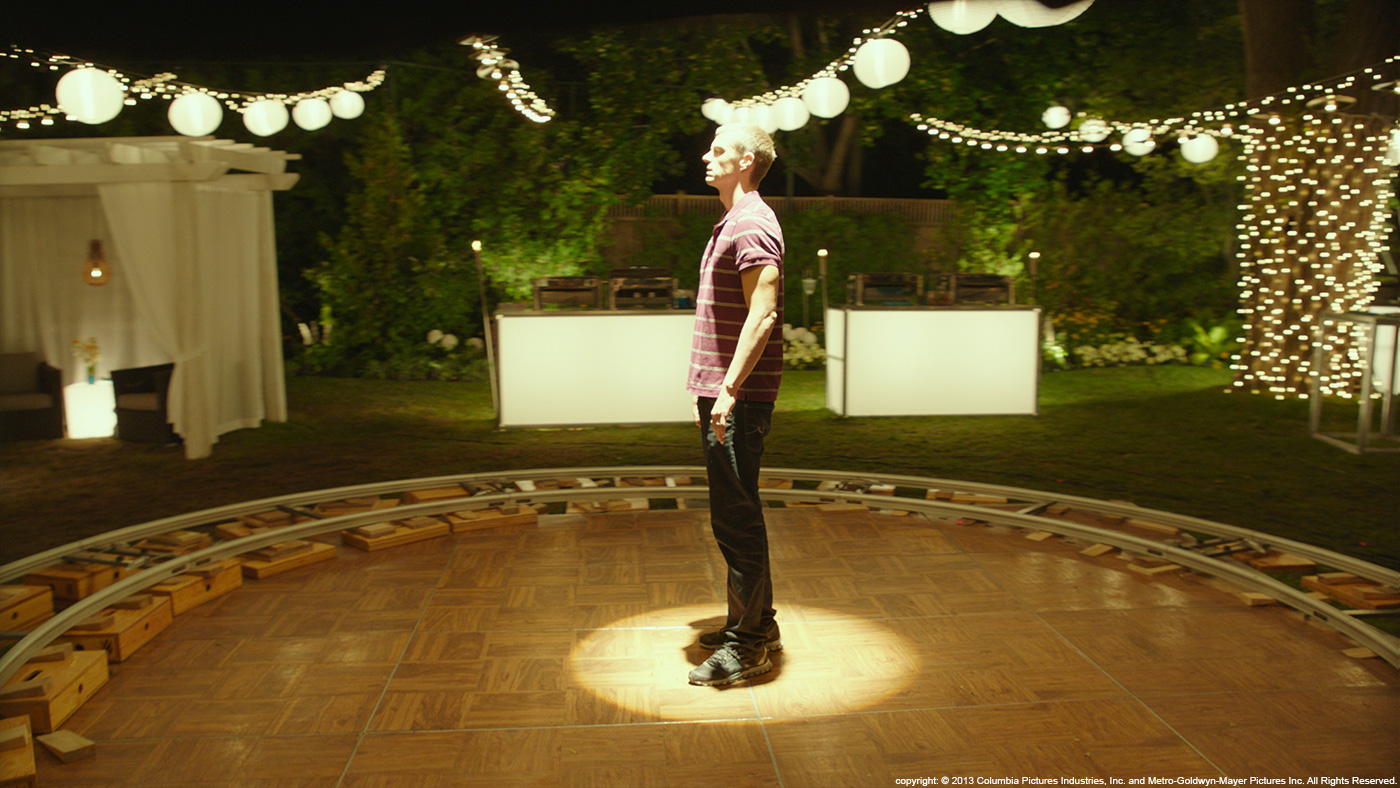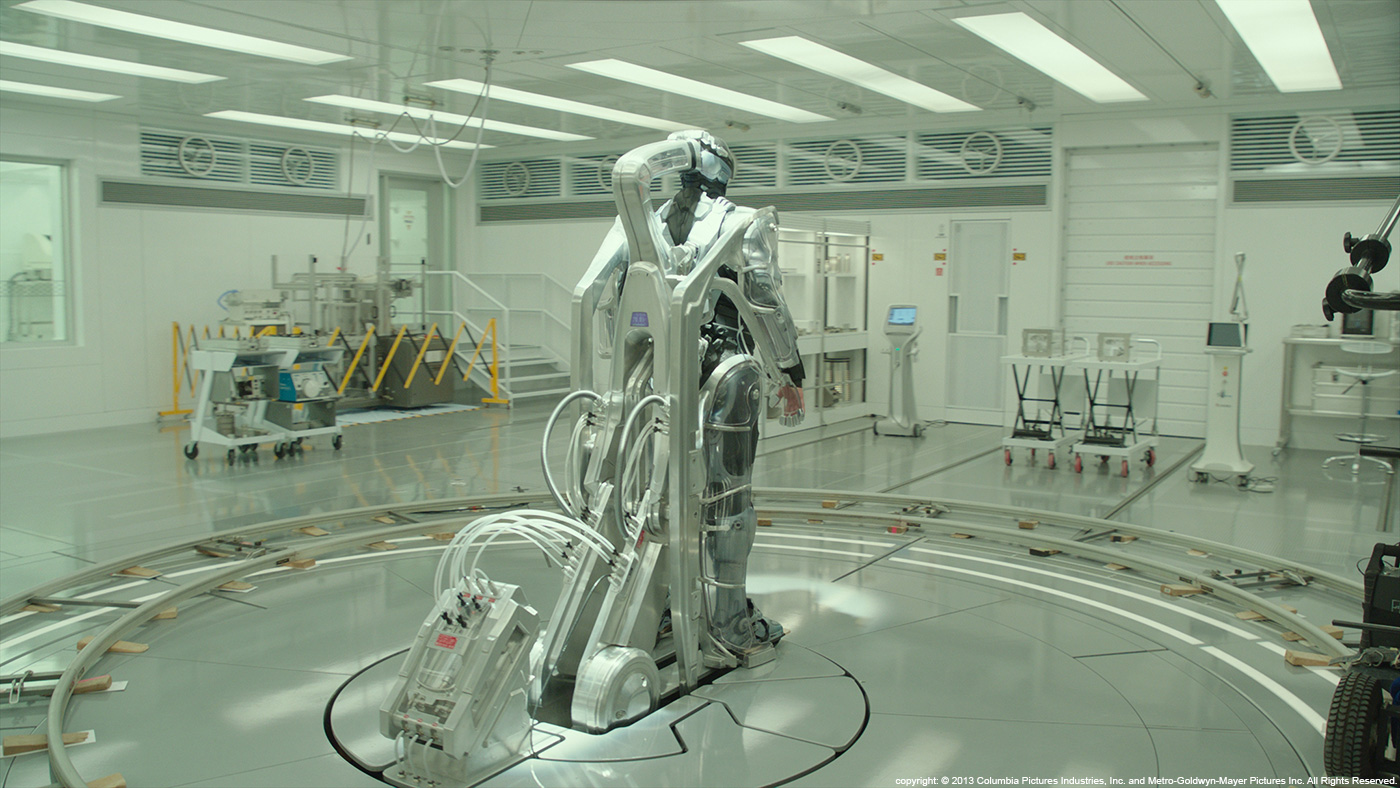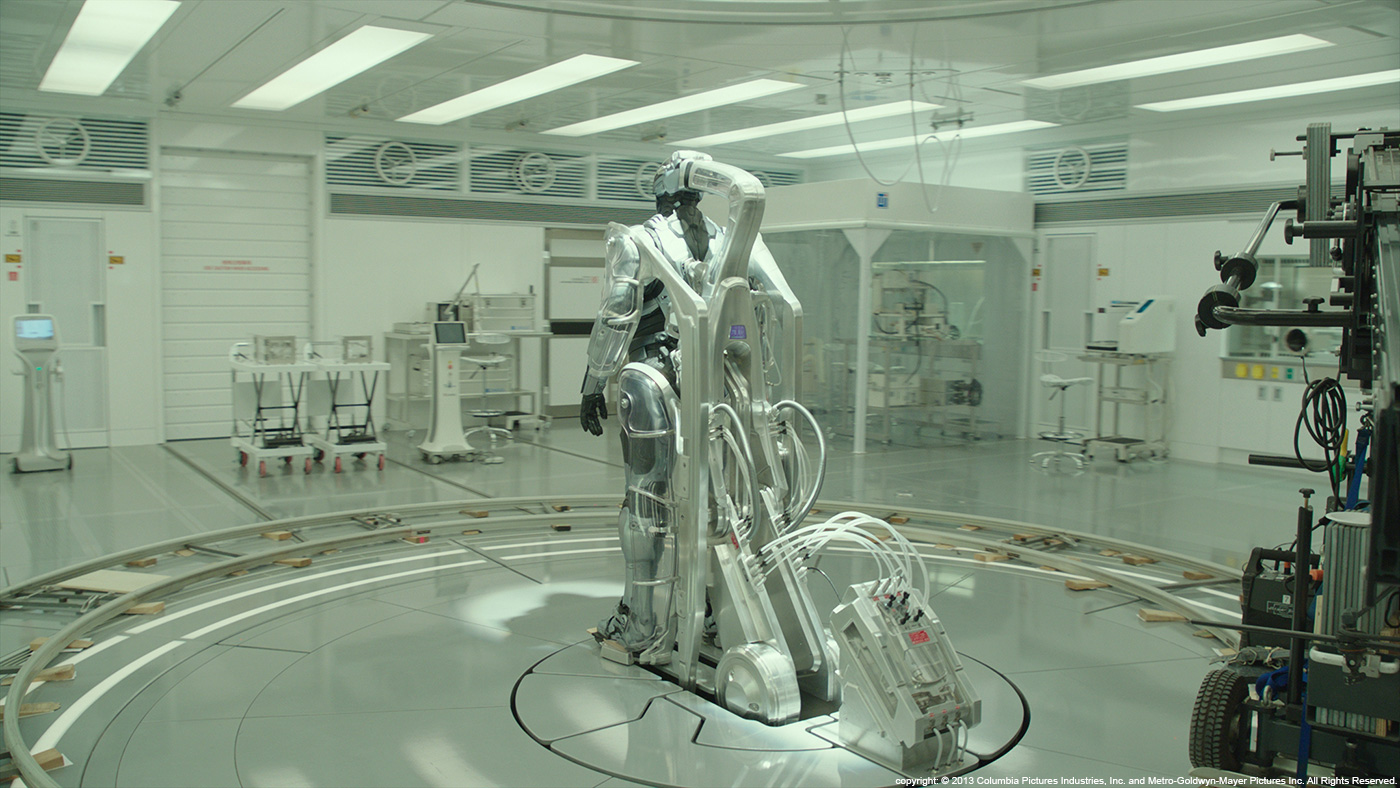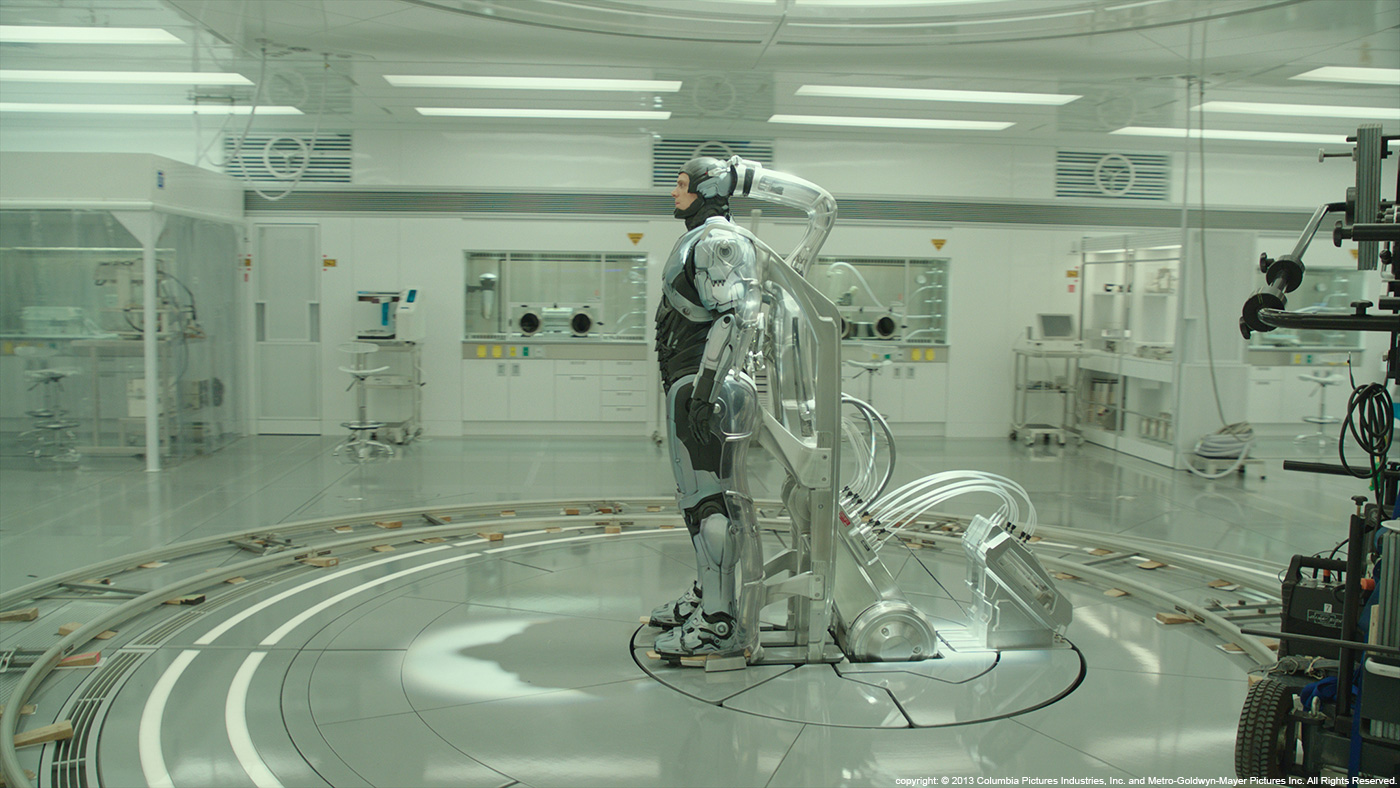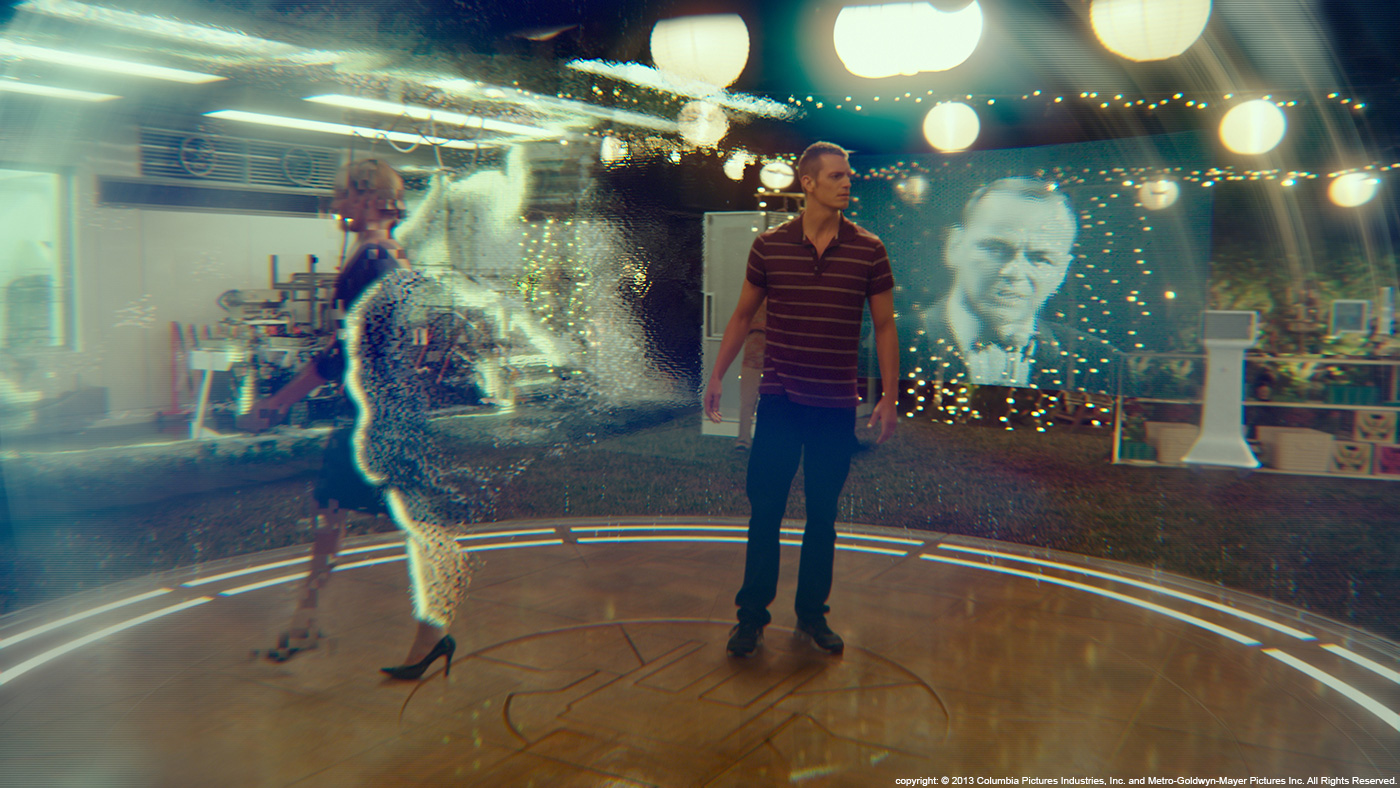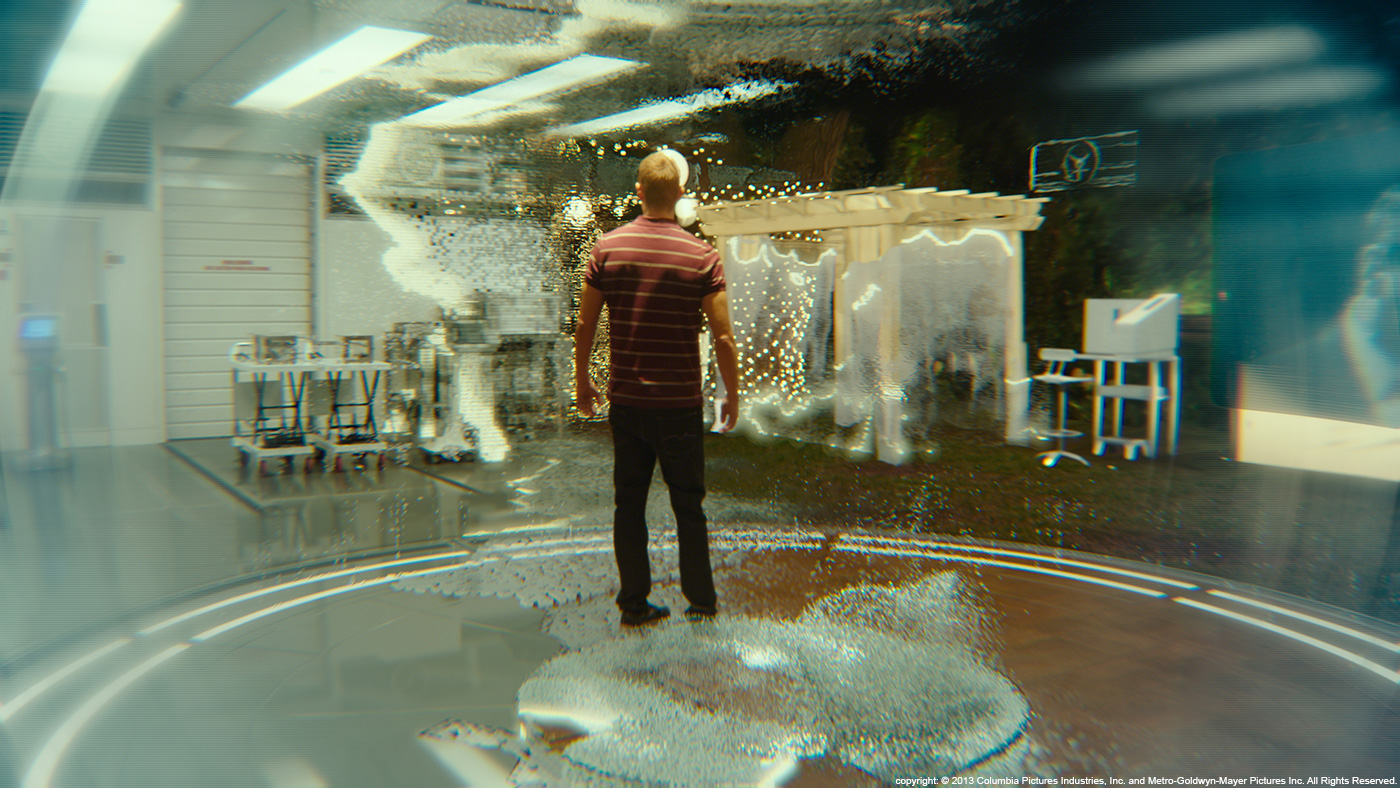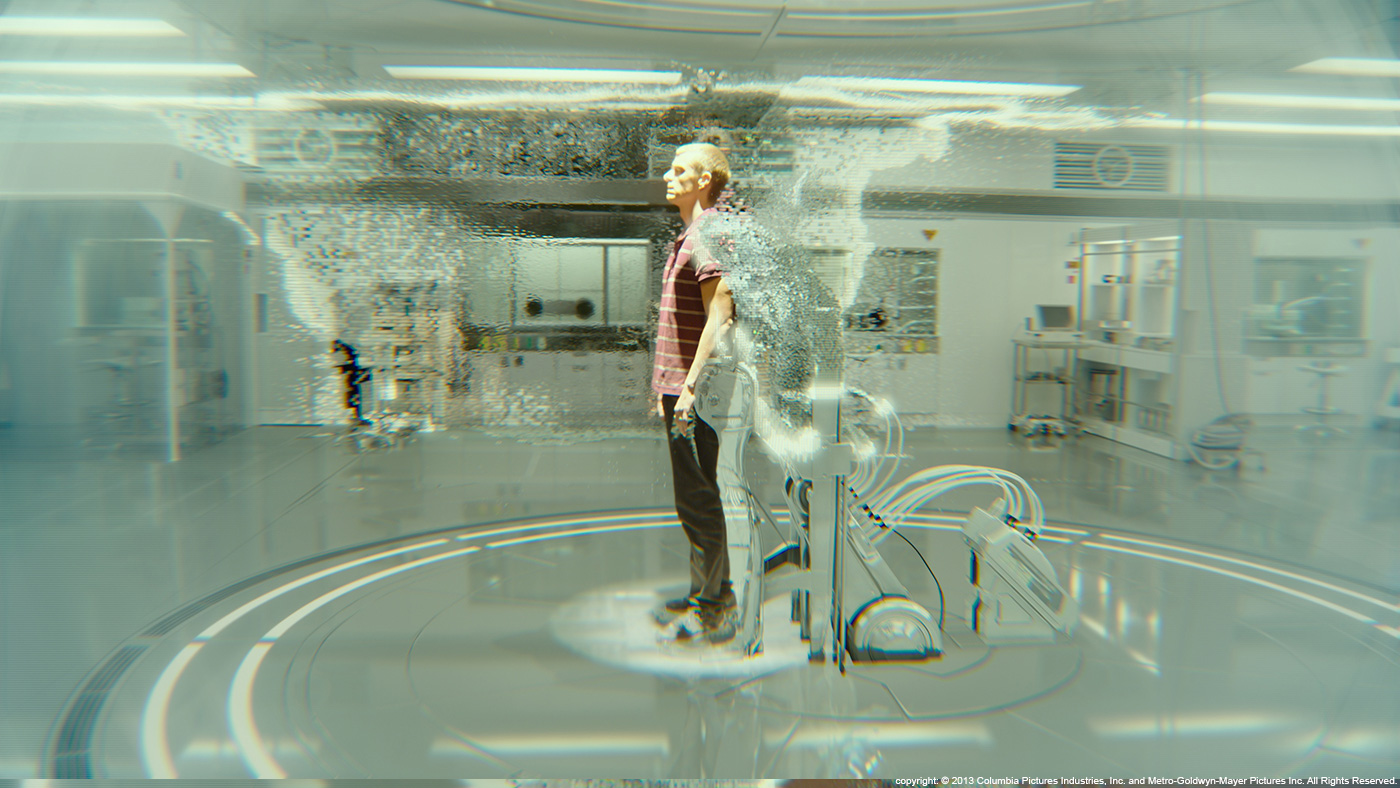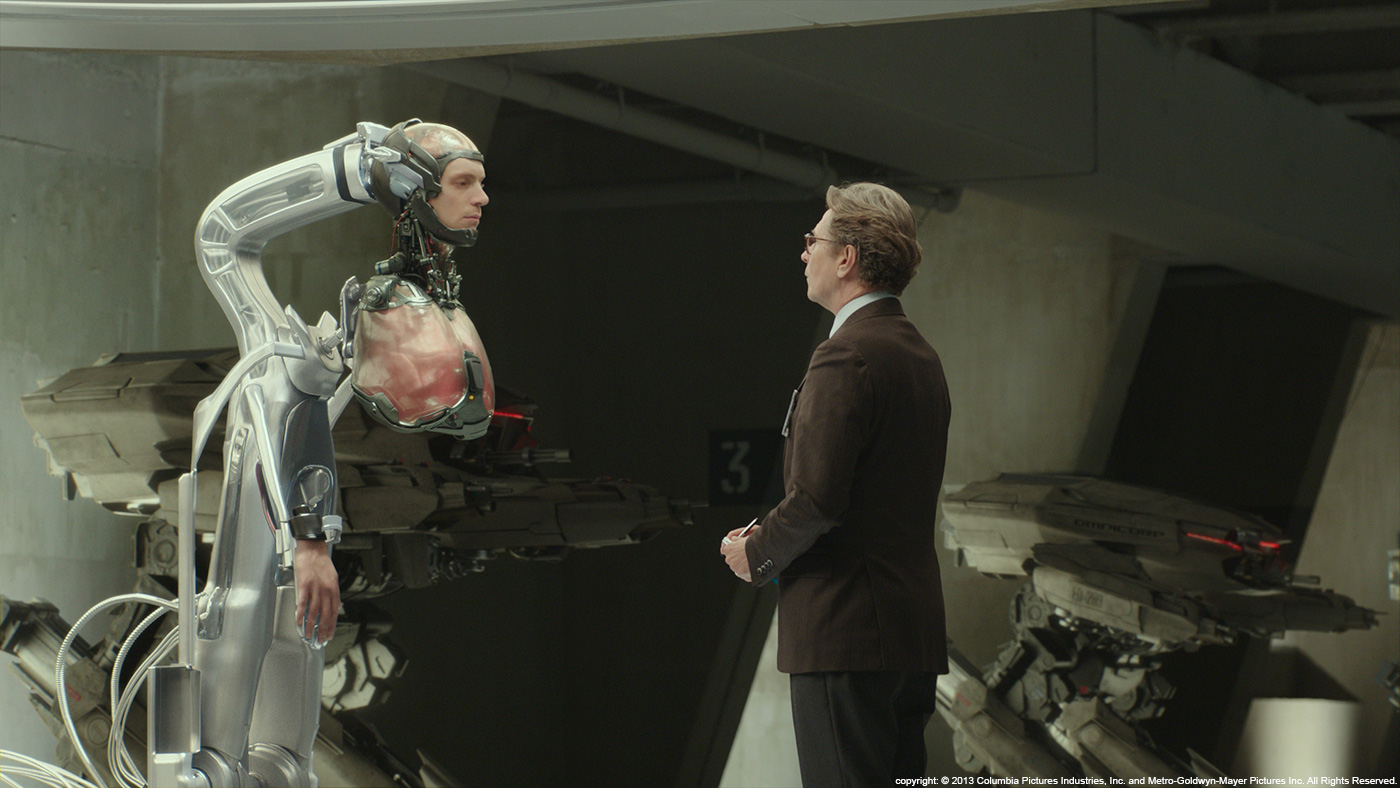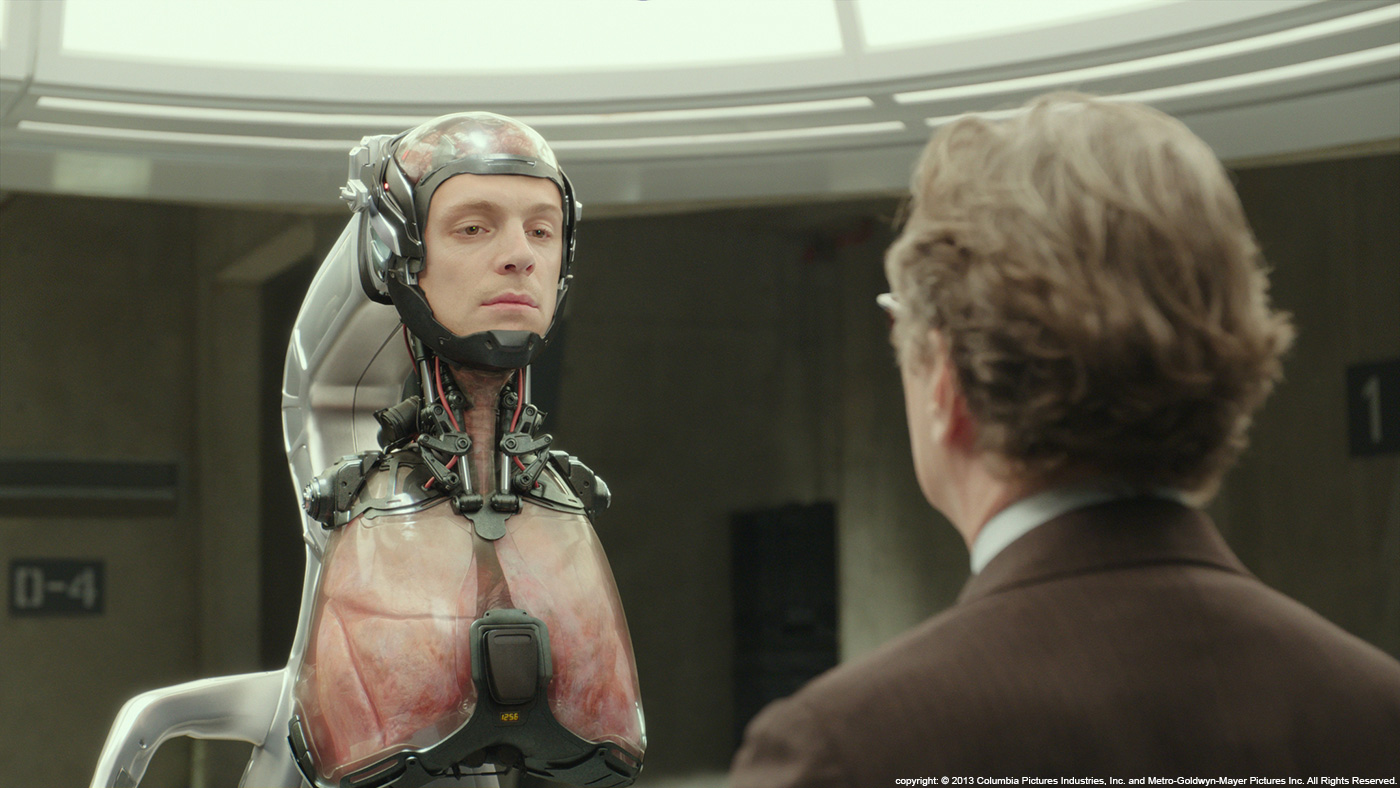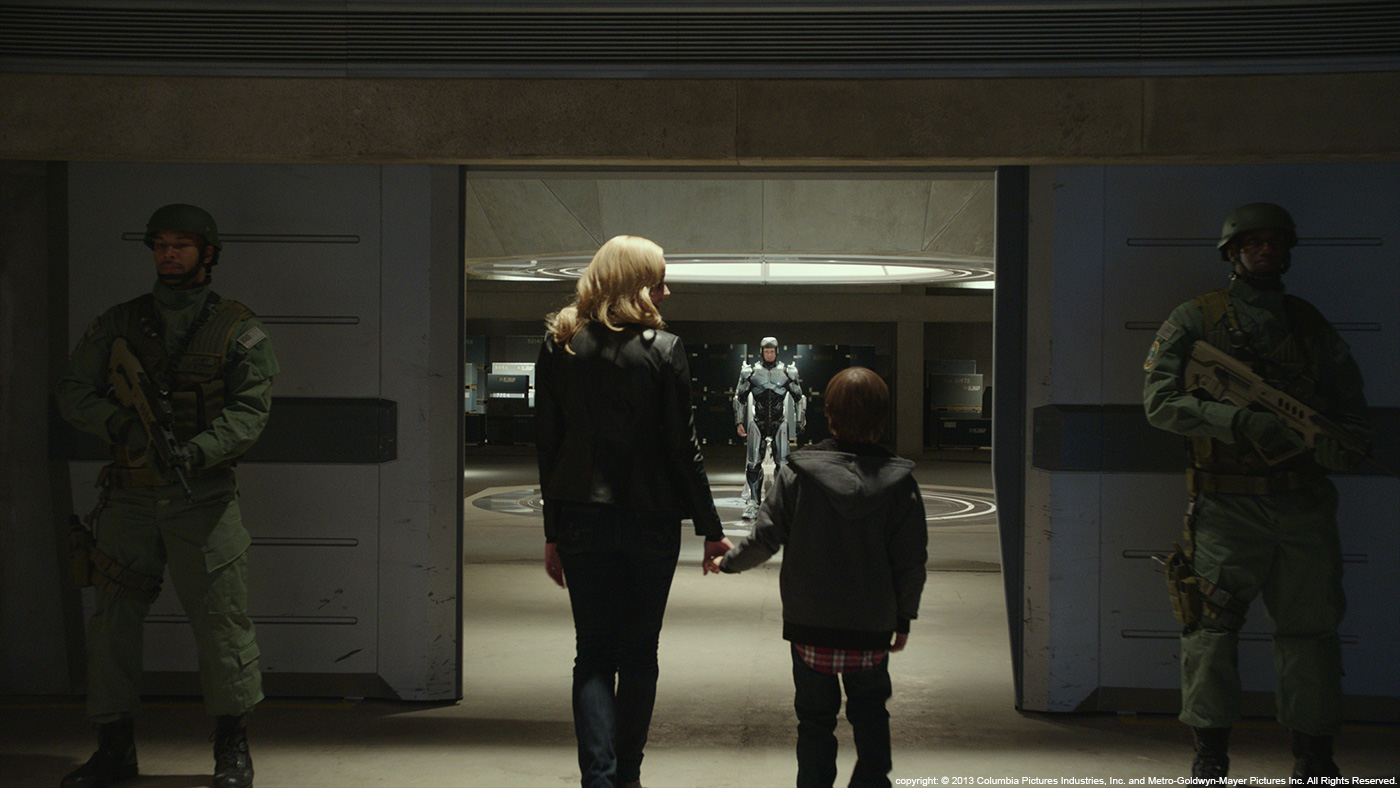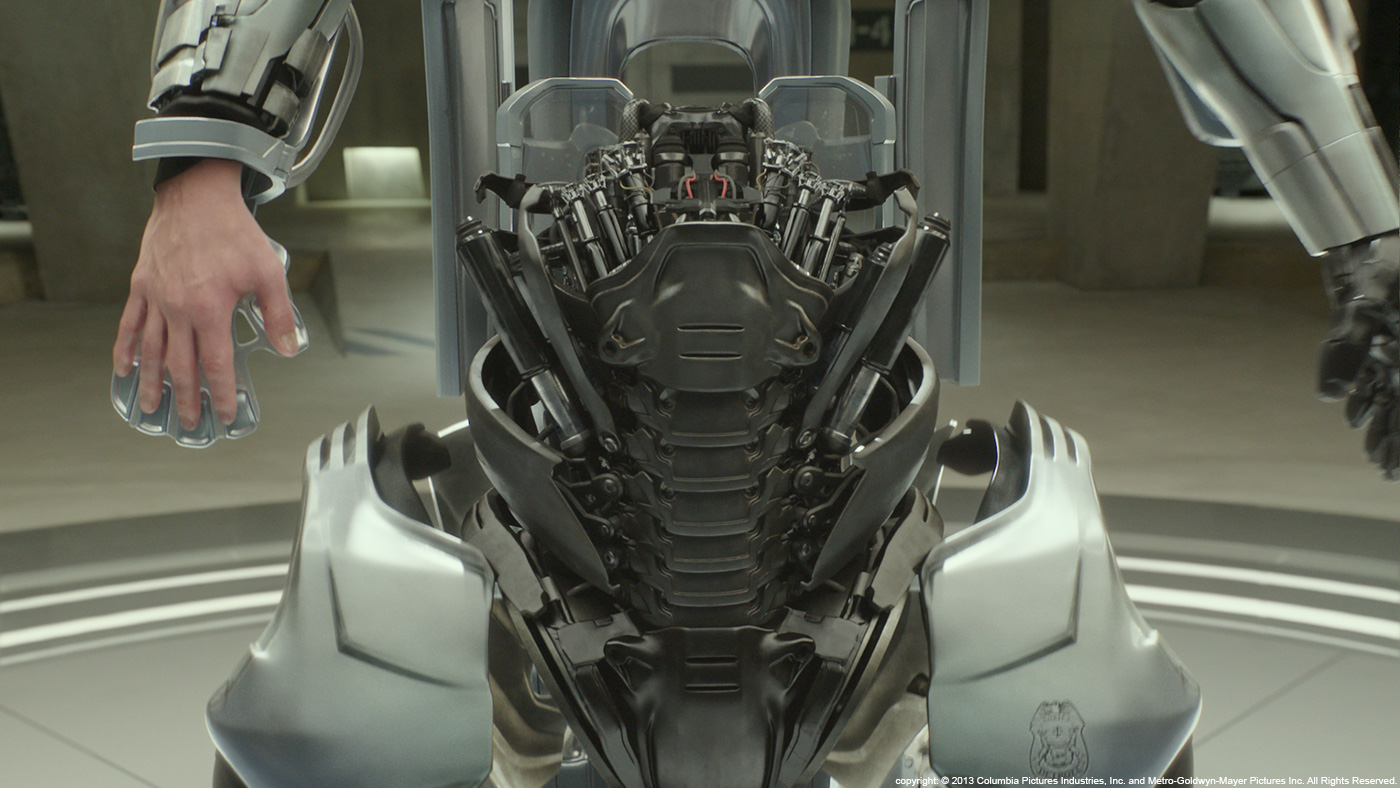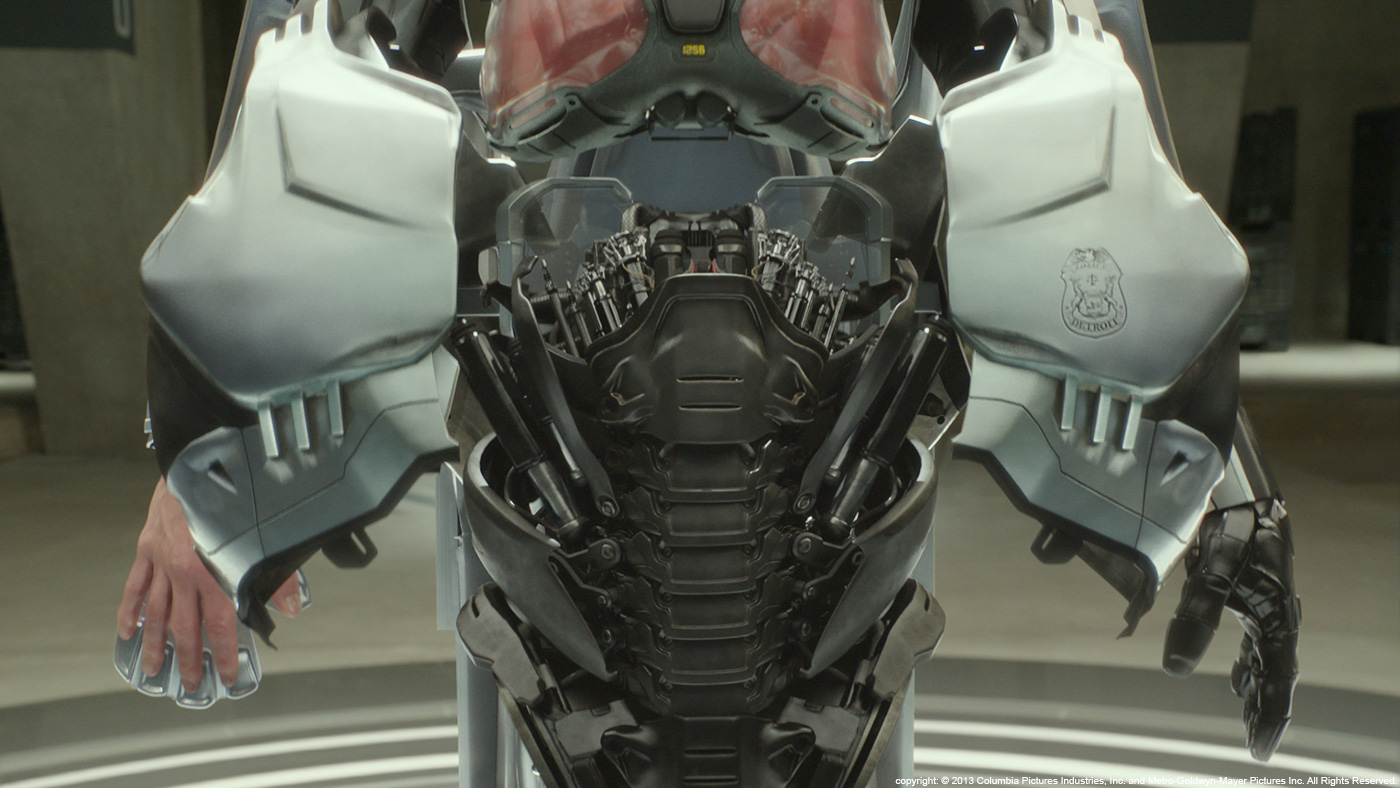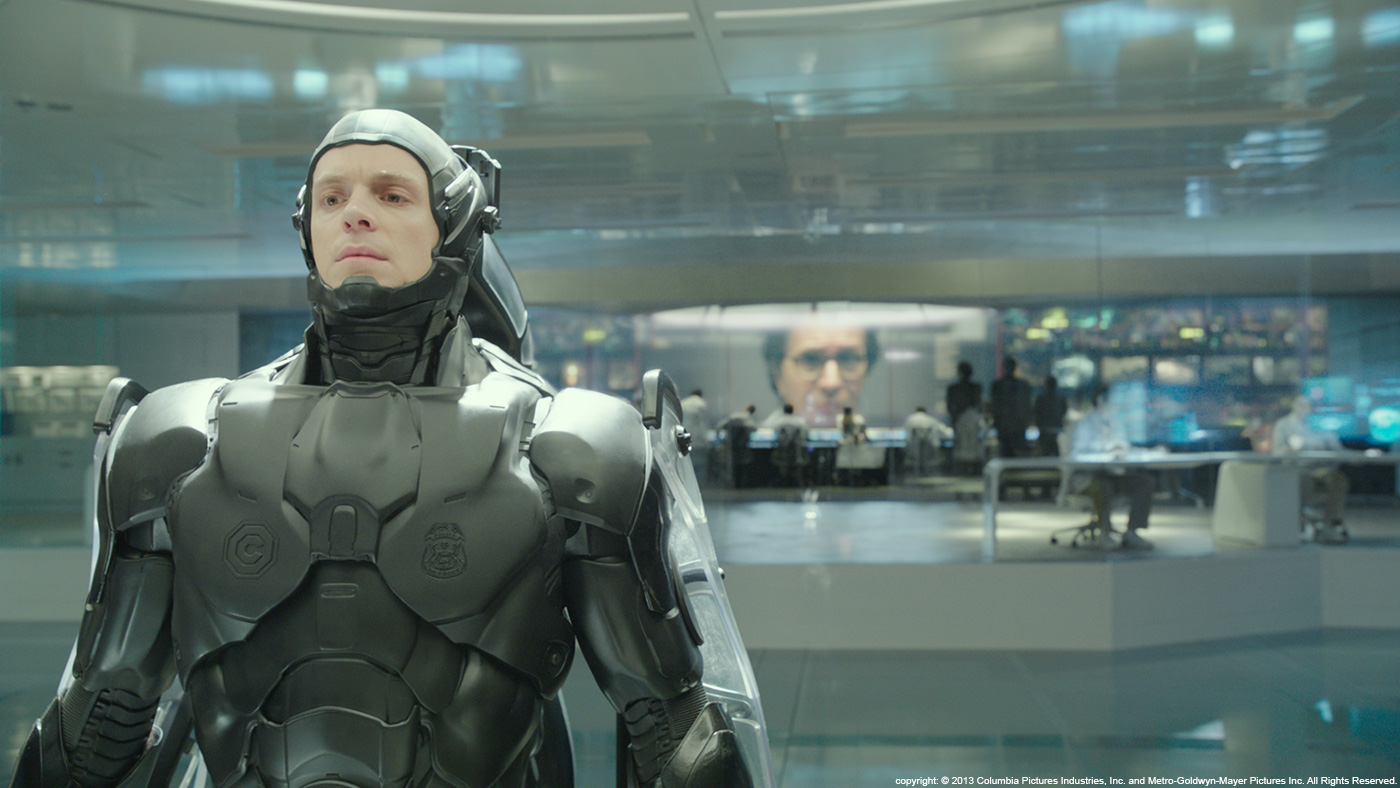Nordin Rahhali is evolving for more than 15 years in the visual effects. Before joining the teams of Method Studios, he worked at CORE Digital Pictures or Digital Domain. He has worked on many projects such as BLADE II, TRANSFORMERS, 2012 or IRON MAN 3.
How did Method Studios get involved on this show?
We were asked to come up with some concepts for the Novak sequence, which is a holographic set. Method Design put together a package of various ideas of what that might look like. After presenting them, José wanted us to be on the show.
How was your collaboration with director José Padilha?
It was very good. José was involved in every major discussion with regards to look and story. He had a lot of trust in our designs and we would really listen to what he wanted to convey in the shot or sequence. From there, we did our best to work it into the shot.
What was his approach about the visual effects?
I believe it’s to surround himself with people that understand his vision and who have a strong visual aesthetic. From there it’s very much a collaboration, he’ll explain why he likes or doesn’t like something so we can go back and try to keep aiming in the right direction.
How did you work with Production VFX Supervisor James E. Price?
I was able to work directly with James on the Toronto re-shoot. We shot the sequence where Robocop is being rebuilt in a military complex surrounded by ED-209’s.
What are the sequences made by Method Studios?
There were four major sequences. One was the Novak Element tv show. This was a virtual holographic set that we had to design. The other was Robocop being rebuilt. Then we had a huge transition shot from a dream sequence of a nighttime barbecue party in Alex Murphy’s backyard… to his reveal as he slowly realizes he is Robocop in a brightly lit and sterile lab. And the last was a miscellaneous group of shots that was anything from computer monitors, cell phones, medical displays and HUD’s.
Can you describe to us one of your typical days?
Lots of meetings and work reviews. Then lunch, then more meetings and more work reviews (laughs). When we get closer to the end we start having the client over to approve shots and give notes in person.
Can you tell us more about the design work for the holographic news set and the various graphics?
Method Design is a creative group within Method Studios led by Mike Sausa, and they designed and created the virtual holographic news set, interactive control panels, medical and military controls, and UI as well. They developed the look of the desktop, the floating holograms and the user interfaces seen throughout the sequence with Samuel Jackson.
Which references and indications did you receive from the director for these graphics?
There wasn’t a lot of time to pull this all together and as there were also multiple vendors working on shots so we had to find the screen content and make the interactions make sense. Method Design came through by creating a lot of ideas and getting that in front of José so he could signoff on the concepts. Then we developed a whole new process for getting them into 280 shots.
Can you tell us more about the graphics creation and animation?
Method Design uses Adobe Photoshop and After Effects, with Maya and Cinema 4D for the 3D components. On the VFX side we use Nuke, Maya and Houdini.
There is an impressive and dramatic reveal shot. Can you tell us more about this long shot?
The transition shot had its own variables and challenges. One was trying to figure out how to best stitch together two very different plates. Each had a similar camera move doing a circular dolly around the main actor. Once we were able to take over the camera and come up with a seamless one, we were able to focus in on transitional elements and effects to help bridge the gap between one plate and the other.
Through a lot of effects work and compositing, our team was able to slowly refine and come up with a beautiful and surreal transition for Robocop’s reveal.
How did you approach the impressive sequence of Robocop being reassembled?
Before the shoot we had done previs on some shot ideas based on a few phone conversations with José. These helped him come up with his shot list on the day, which was different than the previs, but “inspired by” I guess would be the best phrase to describe it. We took Lidar data of the set and used a lot of photo references and measurements of everything. This helped with the camera tracking and matchmove afterwards.
Can you explain in detail about its creation?
For the rebuilding shot, we had a complex rigging assignment which was needed in order to achieve the animation required. We had to extend the model that was received from Framestore in order to accommodate the extra detail and close-up view of Robocop’s internals, especially when they animated into position. All of this had to be photo-real in rendering and compositing. We spent a lot of time in look-dev and texturing in order to achieve the necessary realism.
How did you work with Framestore for the Robocop armor?
We received the base Robocop CG model and textures from Framestore. We needed to do quite a bit of additional modelling and texturing as our shots had different angles and were more close up than Framestore’s. We also had to rig the suit from scratch, as rigs are not usually sharable between facilities.
Can you tell us more about the rigging and animation?
Most of the rigging and animation were needed for one shot — the 600 frame rebuild of Robocop. This all happens right in front of the viewer. The camera starts low and looks into an opening in the floor where there appears to be some sort of room below with robotics moving around. These were designed and built by us for this one shot. Robotic arms rise up holding pieces of Robocop that are getting assembled in front of us. Because of how close we are to everything, we needed to design a lot of parts on Robocop that would make sense and fit with the rest of the model. This led to a lot of back and forth with animation, modelling, and rigging so that we could get it all right.
Can you explain more about the texturing and the lighting challenges?
We had some great references of the practical suit, and of the CG Robocop shots from Framestore. The challenge came from needing the internal robotics and organic components to look absolutely photo-real when scrutinized up close. So we needed to add things like smudge maps, minor scratch maps, specialized dirt maps and even finger print maps on top of creating entirely new textures for newly modeled parts. We also had to render this on an over 600 frame shot of mostly up close and personal CG. This took careful planning, optimization and render resource management. We could only afford to turn around production quality 2k renders so many times. So we needed to be efficient.
How did you manage the challenge of these extremely long shots?
For the ‘dream scene’ sequence, two separate plates were filmed without the use of motion control, although a dolly move around the actor was performed for both. After creating a 3d camera that matched and bridged both the ‘A’ side and ‘B’ side, we were then able to focus in on transitional elements and effects to help bridge the gap between one plate and the other. The move evolved into a 2000 frame shot. For the correct look, we developed concept art based on four key frames and then carried out a test on just 250 frames in the middle. Transition effects were created in Houdini, while a large part of the lab was recreated in CG using Maya and Vray. Some elements of the backyard and lab were re-built and re-projected to match the shot. It involved a lot of tracking, lighting, fx and compositing.
Was there a shot or a sequence that prevented you from sleep?
Is the whole show a good answer? (laughs)
It was the shear volume of work in the short amount of time.
Which offices of Method Studios worked on it?
It was done both in LA and Vancouver.
How long did you work on this film?
Our work on the film took 3 months.
How many shots do you do?
280 shots.
What was the size of your team?
Our team was up to 127 at any one time.
What is your next project?
I’m currently working on new 2014 feature titles but I’m not able to publicly speak about them!
A big thanks for your time.
// WANT TO KNOW MORE?
– Method Studios: Dedicated page about ROBOCOP on Method Studios website.
© Vincent Frei – The Art of VFX – 2014


